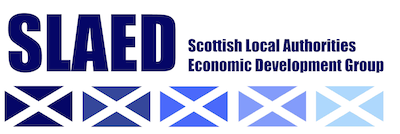Scottish Local Authority Support for Regional Investment, SME Investment and Employment Aid (SC10294)
Legal Context
In terms of Section 20 of the Local Government in Scotland Act 2003, Scottish Local Authorities may provide investment and employments aid to qualifying enterprises.
Objectives of the Scheme
The objectives of the scheme are
a) to assist the development of disadvantaged parts of Scotland by supporting investment and job creation in those areas of Scotland identified as “Assisted Areas”; and
b) in terms to provide investment and employment aid to SMEs in all parts of Scotland.
Eligible Sectors
With the exceptions detailed below, the scheme shall apply to all sectors of the economy.
(a) aid which favours activities in the steel sector, the coal sector, the shipbuilding sector, the synthetic fibres sector, the transport sector as well as the related infrastructure, energy generation, distribution and infrastructure;
(b) regional aid in the form of schemes which are targeted at a limited number of specific sectors of economic activity; schemes aimed at tourism activities, broadband infrastructures or processing and marketing of agricultural products are not considered to be targeted at specific sectors of economic activity;
Additionally, aid will not however be given which is conditional on the exporting performance of the recipient nor will the aid be contingent on the use of domestic over imported goods and services. In addition aid will not be given to “ailing or insolvent” enterprises.
Eligible Costs
The eligible costs shall be either or both of the following:
(a) the costs of investment in tangible and intangible assets;
(b) the estimated wage costs of employment directly created by the investment project, (restricted to initial investment) calculated over a period of two years.
The investment shall be maintained in the recipient area for at least 5 years, or at least 3 years in the case of SMEs, after completion of the investment. This shall not prevent the replacement of plant or equipment that has become outdated or broken within this period, provided that the economic activity is retained in the area concerned for the relevant minimum period.
Aid Intensity and Thresholds
The UK Assisted Area map sets out the areas eligible for regional aid and the maximum aid limits which apply. This can be increased by 20% for small enterprises and 10% for medium sized enterprises. These thresholds apply either as a percentage of either investment or salary costs.
For Scotland the limits by size of undertaking are as set out below:
Area | Large | Medium | Small |
|---|---|---|---|
| Pre-Defined Assisted Areas according to sparsity of population | 15%* | 25% | 35% |
| Other Assisted Areas within Scotland | 10%* | 20% | 30% |
| Non-Assisted Areas | N/A | 10% | 20% |
* only eligible in terms of initial investment in new activity.
The aid beneficiary must provide a financial contribution of at least 25% of the eligible costs either through its own resources or through external financing in a form that is free of any public support
Definitions
Assisted Areas” refers to areas designated in terms of the Assisted Areas Order 2014 as amended by the Assisted Areas (Amendment) Order 2017.
A small enterprise is defined according to Section 382 of the Companies Act 2006. To be considered small an enterprise must satisfy two or more of the following requirements:
- Turnover: Not more than £10.2 million
- Balance sheet total: Not more than £5.1 million
- Number of employees: Not more than 50
A medium enterprise is defined according to Section 465 of the Companies Act 2006. To be considered medium an enterprise must satisfy two or more of the following requirements:
The qualifying conditions are met by a company in a year in which it satisfies two or more of the following requirements—
- Turnover: Not more than £36 million
- Balance sheet total: Not more than £18 million
- Number of employees: Not more than 250
“Tangible assets’ means assets consisting of land, buildings and plant, machinery and equipment;
“Intangible assets” means assets that do not have a physical or financial embodiment such as patents, licences, know-how or other intellectual property;
“Initial investment” means:
(a) an investment in tangible and intangible assets related to the setting-up of a new establishment, extension of the capacity of an existing establishment, diversification of the output of an establishment into products not previously produced in the establishment or a fundamental change in the overall production process of an existing establishment; or
(b) an acquisition of assets belonging to an establishment that has closed or would have closed had it not been purchased, and is bought by an investor unrelated to the seller and excludes sole acquisition of the shares of an undertaking;
“Initial investment in favour of new economic activity” means:
(a) an investment in tangible and intangible assets related to the setting up of a new establishment, or to the diversification of the activity of an establishment, under the condition that the new activity is not the same or a similar activity to the activity previously performed in the establishment;
(b) the acquisition of the assets belonging to an establishment that has closed or would have closed had it not been purchased, and is bought by an investor unrelated to the seller, under the condition that the new activity to be performed using the acquired assets is not the same or a similar activity to the activity performed in the establishment prior to the acquisition;
Budget
The estimated budget of the scheme is £25m over five years.
Duration
The scheme will operate from 1st January 2021 to 31st December 2025.
(ML / June 2021)

